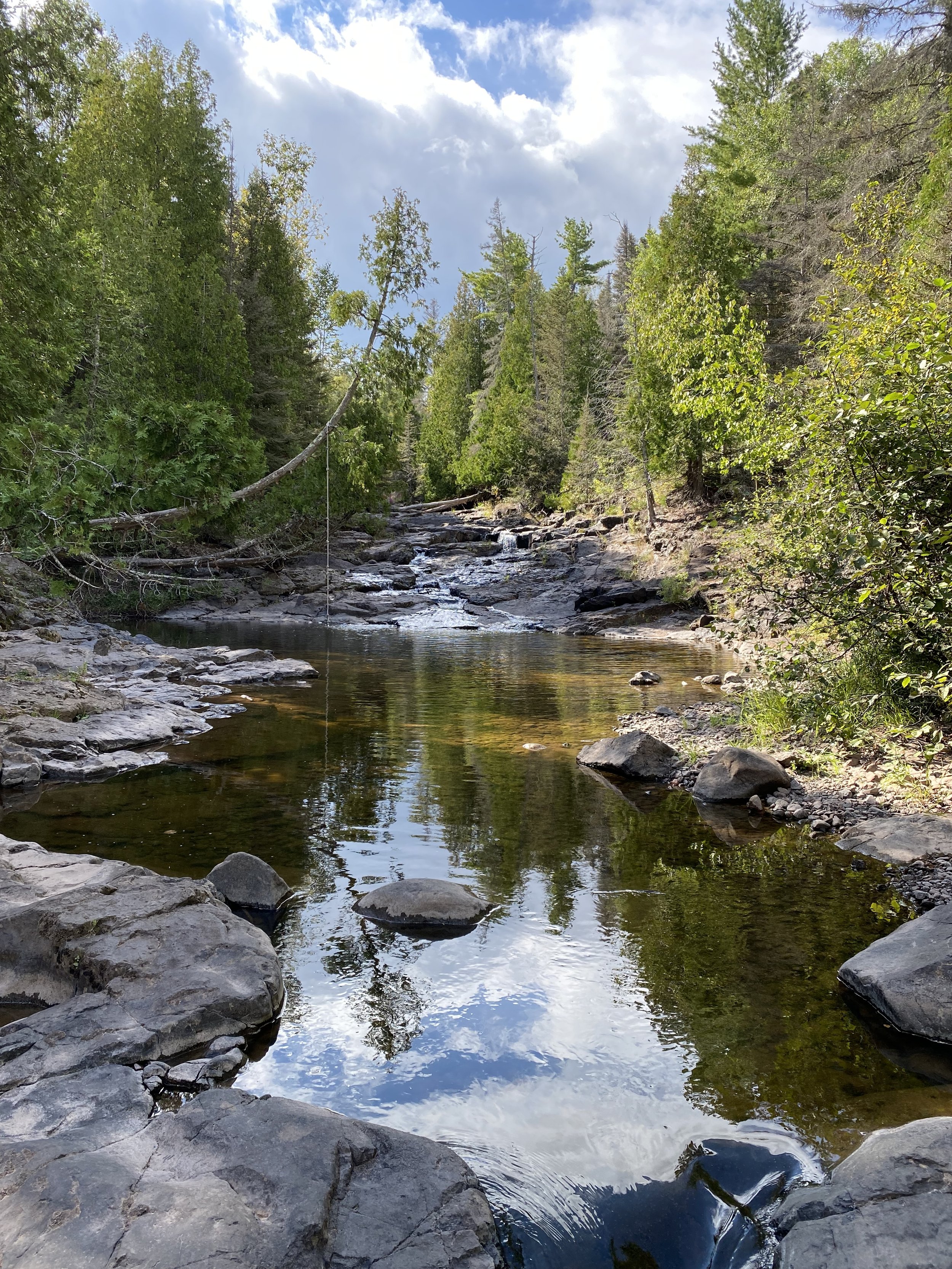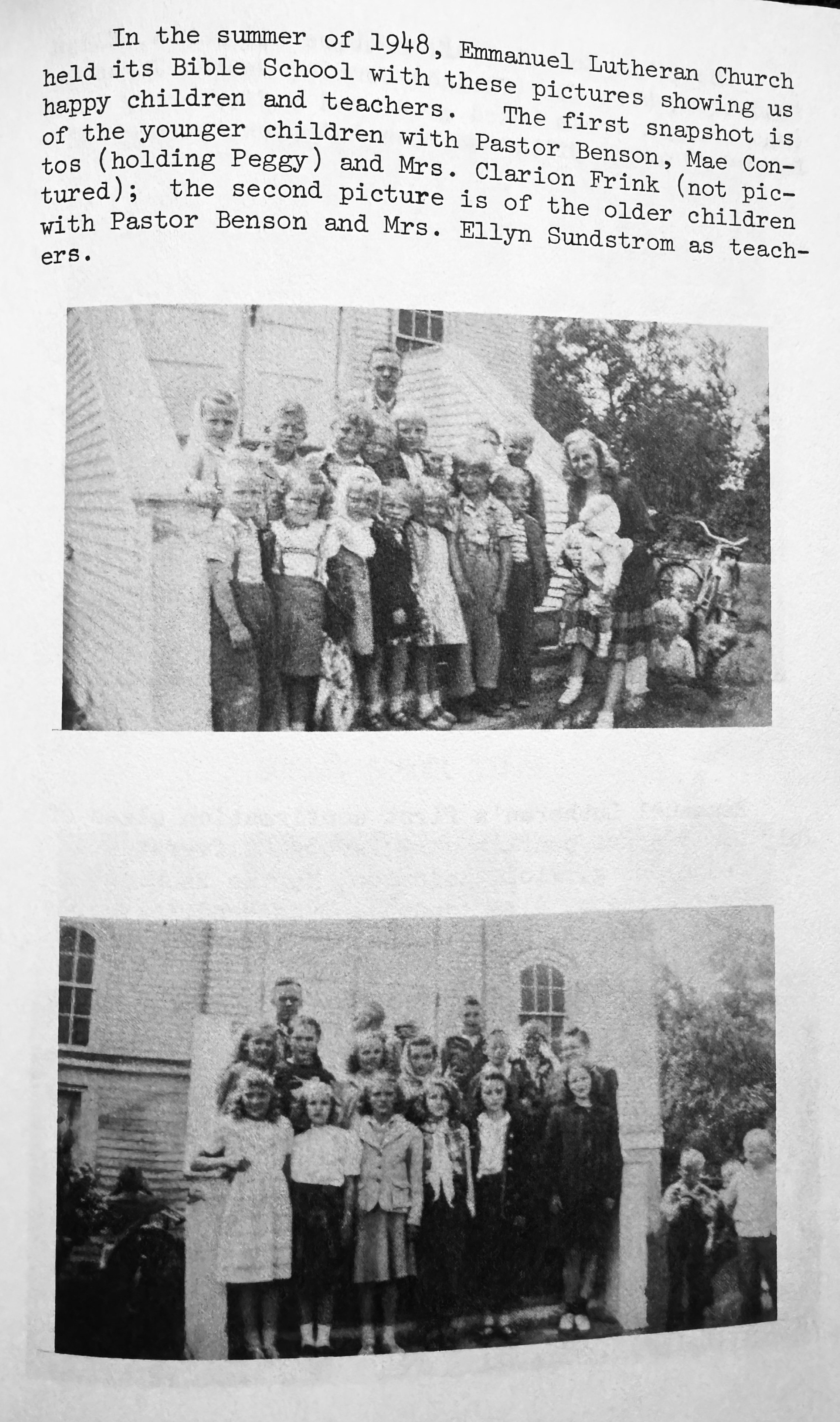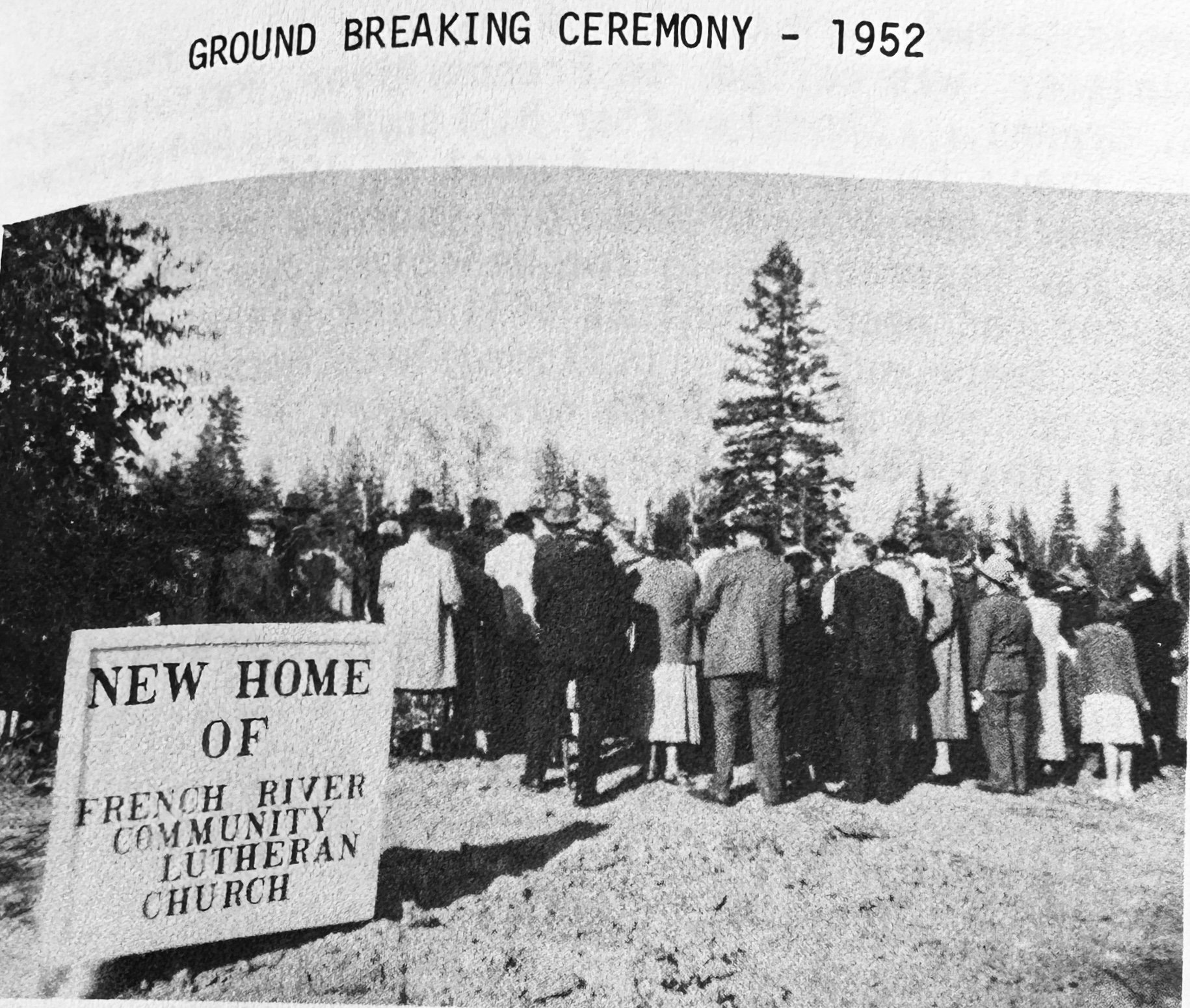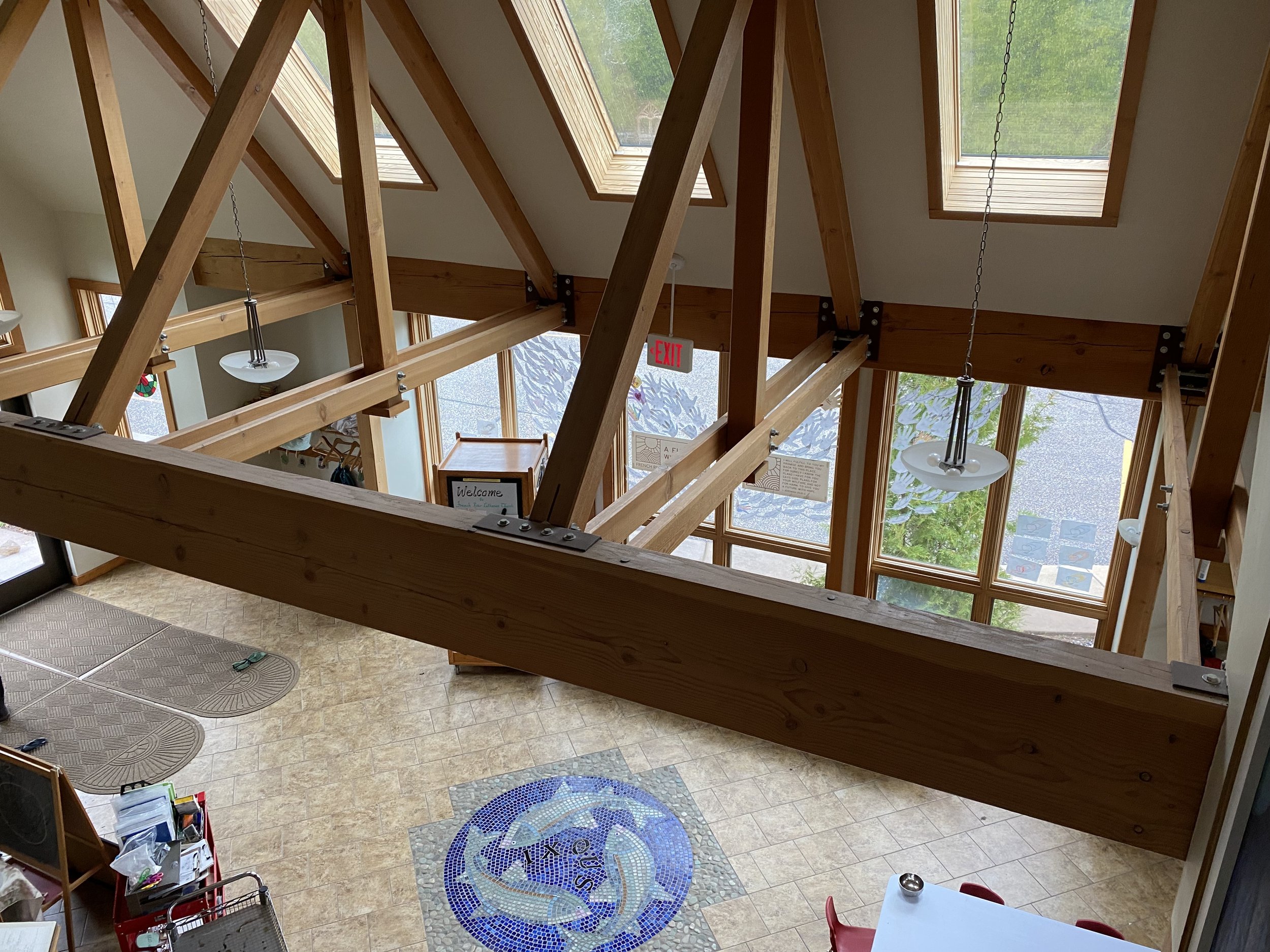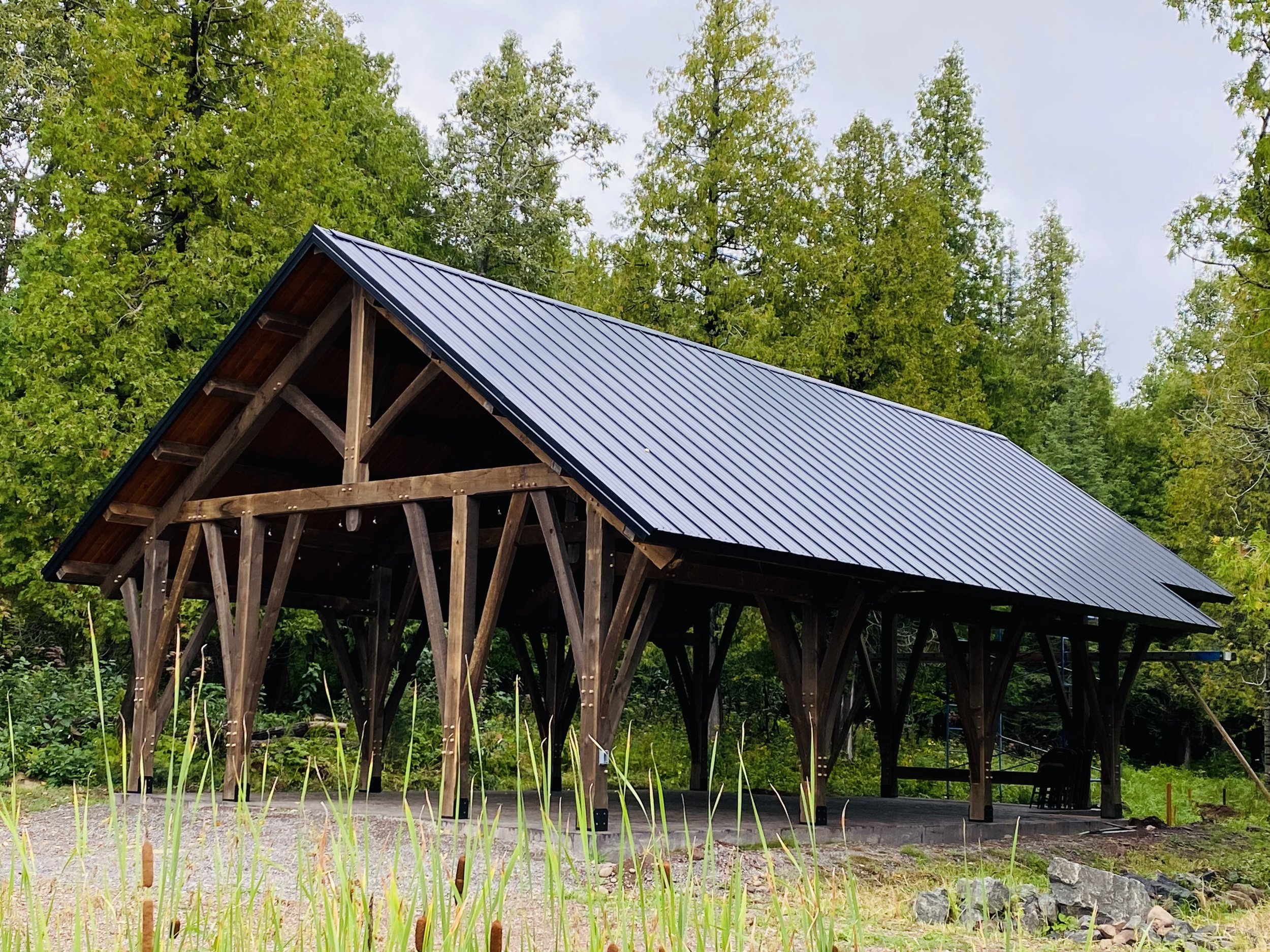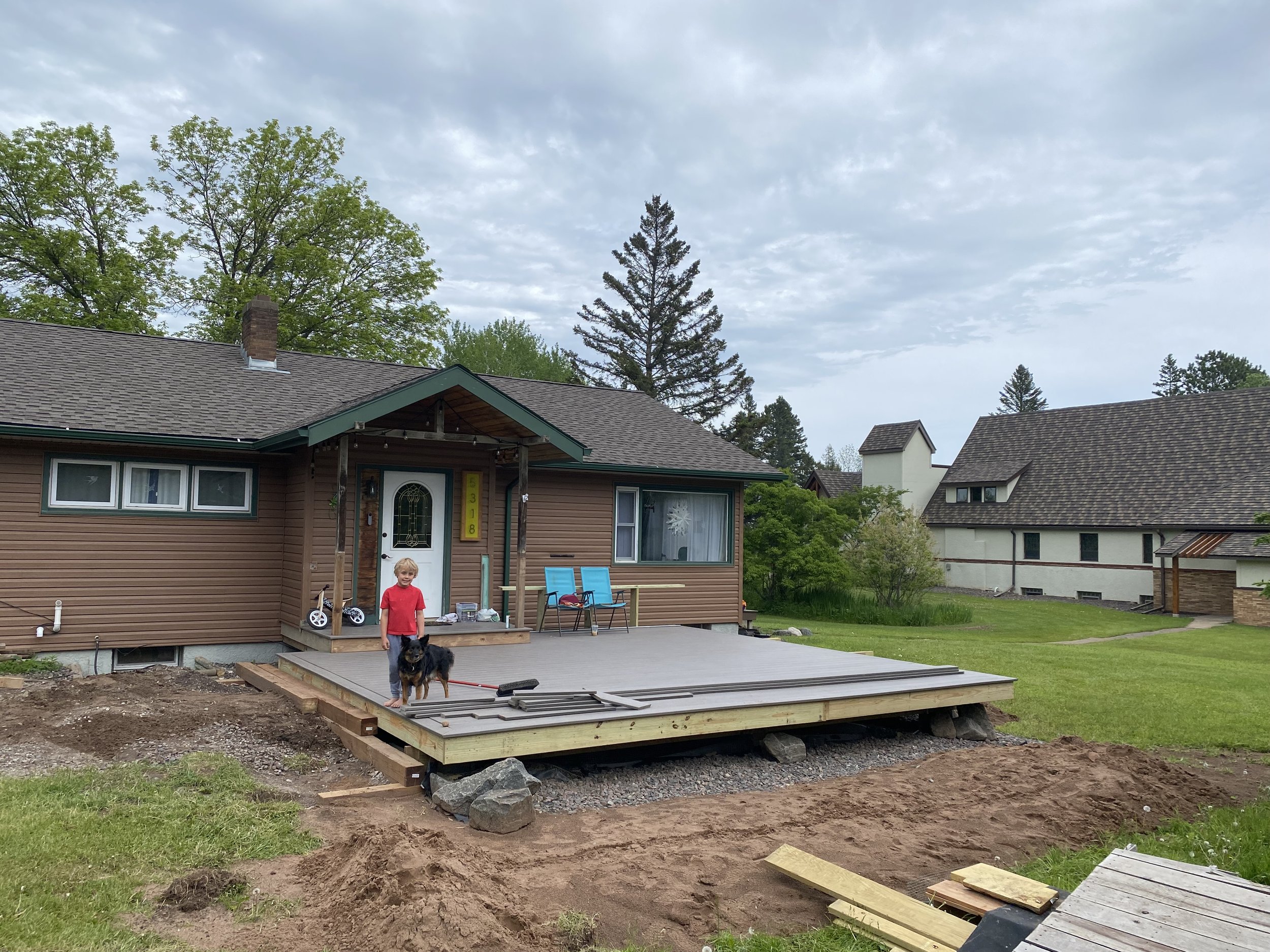History 1924-2024
Making Waves in Christ for 100 Years and continuing forward.
EARLY SETTLEMENT — Town of Clifton & the French River.
It seems somewhat uncertain whether the name French River was derived from early copper explorations conducted by the French River Mining Company or whether the name existed prior to those activities. It is likely that some of these operations started in the area as early as the late 1850's, but the evidences of these operations have now disappeared.
Evidently the early mining explorations did not meet with any great success as no further developments followed the efforts in this field. So it was natural that since the area at that time was covered by virgin timber, it would attract lumbering industries. Several large logging operations were at work in the area prior to the great fire of 1918. Several companies were organized to engage in the lumbering industry, only to die when the operations were over.
Timbering operations were conducted on a large scale in the immediate French River area. A raised causeway built of logs (about one-half mile west of French River leading to the lake) at this point where logs were rafted for towing out, was still to be seen up until the fire of 1926 When this last trace of logging operations disappeared, destroyed by fire.
HOMESTEADERS — Swedish & Finnish Immigrants set down roots.
No permanent roads were built in those days, and not much thought was given to the future of our immediate area. But events were moving in other places in the late 1800's and very early 1900's that were to have an effect on the French River area. Immigration from the European countries reached its peak in these years and much of this history of the community is recorded in the publication of “LANDMARKS,”
To the residents along the shore water transportation was a real necessity. Food and other necessary products were delivered by small freight boats owned by the fish companies, which also picked up fish along the North Shore, usually between Duluth and Grand Marais, Minnesota.
Further inland where early settlers turned to the soil, the same strength of character and determination was a very necessary requirement. Without a real concern for one another, no agricultural effort could have succeeded. The problems of earning a livelihood were common efforts to all. Many of these people migrated from the Scandinavian countries and had been brought to the "new land" with them. So it was perhaps preordained that they should come together to arrange for their spiritual concerns for themselves and those who would follow them. Spiritual concern for the community was also felt in other places.
The Emmanuel Evangelical Swedish Lutheran Church of French River, Est. 1924
THE CREATION OF A SWEDISH LUTHERAN CHURCH
When meetings were first held in the area that were to culminate in the organization of French River Lutheran Church, they were held in various homes and in the Bloomingdale School (Currently North Shore Community School). Pastors from churches in West Duluth were present, usually from Bethany/Bethel Lutheran Church. It was Pastor C. J. Silfversten who guided the little group toward the official organization. Pastor Silfversten was still a seminarian when he began the work at French River. He was aided in the interim by other pastors, often Carl Ober, the Olson brothers - Carl and Oscar - as well as others, but it was Bethel Lutheran that took a deep concern for the little group.
From them came the driving force that was to see the church at French River organized. Thanks be to God for their efforts. Although meetings were held and a ladies society was organized several years before, it was not until 1924 that the congregation was officially bound together as a sister organization of the Minnesota Conference of the Augus-tana Lutheran Church.
The charter members are listed in the records as follows: (24 communicants and 27 children) — Peter and Anna Hendrickson, Salvin and Verner; Walfred and Alma Hendrickson, Conrad, Svea; Einar and Freda Hendrickson, Ethel, Helen, Harold, Kenneth; Fred and Annie Sundquist, Alfred; Elof and Elsie Strand, Gunnard, Alice; Nimrod Hendrickson; Selma Gustafson; John Gustofson, Ruth; Gustaf and Alma Sundstrom, George, Martin, Carl, Alma, Edna; Victor and Ida Sundstrom, Svea, Dagney, Sven, Clifford; John and Alma Sundstrom, Alfhild; Halvor Nordin, wife and children; and George Johnson.
The organizational meeting was held in the home of wal fred Hendrickson, July 2, 1924. The scripture reading was from John 8:12. Pastor Silfversten was the first pastor; Einar Hendrickson was the first secretary.
The church was named: Emmanuel Evangelical Swedish Lutheran Church of French River.
Although meetings were being held in the various homes it soon became evident that a church building was needed. However, the depression years that followed must have been sorely felt, as it was not until 1934 that construction of a building had begun. Preparations and plans for a building had been drawn some years prior to the actual start of construction. It was not until 1944 that the first church building was actually completed. The building was located at the corner of Anderson (now Paul Road) and Ryan roads; this property was donated by Einar Hendrickson.
The first board members of the newly organized congregation were as follows: Pastor C. J. Silfversten, presiding, G. Dahlberg, . Sundstrom, P. Hendrickson, John Gustafson, Einar Hendrickson and Halvor Nordin.
Also noting from the records, the first pews in Emmanuel were given by Bethany Lutheran. The altar was built by a man from West Duluth. The wooden Altar cross was made by Pastor Silfversten. The Hymn Board was given by the family of Ole Nelson. There are still many members who recall the famous fish dinners and with them, the proceeds from these annual fish dinners helped along way toward paying the expenses of first little church, had become almost a tradition, and was anticipated by people for miles around.
However, if hindsight is of any value, it was evident that even at that time a part-time ministry was not adequate to care for the needs of the community. With the growth of the community a full-time church program was necessary. Following the ministry of Pastor Silfversten, Pastor J. R. Benson was called on to continue the work of the congregation. It was shortly after his coming that a full-time ministry was considered as services were still held only every other Sunday. With the announcement of a full-time ministry and Sunday School with Pastor Philemon Smith as Vice Pastor, it was evident that the little "church on the corner" was sorely inadequate to serve the congregation and Sunday School and other developing arms of the church. But where to turn to for help was a very real question, as the church was still being served by pastors from other congregations without a definite call from French River, other than as vice pastors.
Upon the suggestion from Pastor Smith, the Minnesota Conference was contacted during its annual meeting in St. Paul. Thanks to the efforts of its president, Emil Swenson and Sigfred Engstrom and others, the Board of American Missions entered the area and sent its representative, Pastor J. M. Rasmussen to direct the work here. Under his driving and energetic efforts, the congregation grew and plans for a new church structure were drawn up and work began with the ground breaking in 1952.
A NEW LOCATION FOR GROWTH
Thus began a new page in church history in French River. With a loan from our mother church, Bethany Lutheran, West Duluth, the work was set forward under the able building supervision of John Blomquist, on lots that had been bought previously on the Ryan Road and scenic highway 61.
Most of the labor was donated and by fall of 1953, the basement had been completed and covered. The mission had considered its organizational work complete the first full-time minister was called to French River Lutheran, Pastor Marvin E. Greene. Shortly after his coming, the basement was ready for use, and on August 8, 1954, following a farewell service to the old church, we moved into the new basement. The church plans which were originally made were to some extent revised, prior to the final construction, to accomplish a more church-like interior and also simplify construction of the church.
Building committees included the members of the Board of Administration plus earlier board members: Kenneth Hendrickson, Don Oberg, Glen Uber, M. Kaldor, George Sundstrom, Arvid Sorvik, Einar Elickson, Talfourd Eiken, R. B. Benson, Carl Sandberg, Frank Nelson, Ear! Lindgren, C. R. Anderson, John Frink, William Sundberg
The cost of the completed building was approximately $60,000 in 1951. So much labor was donated, and the church was given materials close to the wholesale cost. Firms who had a part in the completion of the construction were: Architects, H. N Orfalt, later revised by Melander and Fugelso, Heating design - Elmer Peterson, Interior construction -Sundquist and Ossel, and Church Pews - Manitowoc Church Furniture Company.
In the meantime a home for the pastor had been bought at 5411 East Glenwood Street; later to be sold when building lots became available next to the new church building. A parsonage was built in 1955. — Historical Accounts of FRLC given by lifetime parishioner Helen Hendrickson
THE LAST TWENTY-FIVE YEARS TO PRESENT DAY
In 2004, ground was broken again for the expansion of a larger narthex, a youth room, a fireside room, new pastor’s office, main office, elevator, a remodeled church kitchen, and a two-story alcove bump out on the Lake facing side of the church giving more room in the sanctuary for high holy days, funerals and weddings, and a continued growing church. This alcove also was given a windowed children and parents room. In the fellowship hall, the alcoved space gave more room for our Sunday school classroom. These additions have made the space more welcoming, brought in more natural light and views of our natural setting, and allowed for more community groups, that of FRLC and neighborhoods, to to be able to use the space.
In Spring of 2020, much of the world experienced the jarring impact of the Covid-19 Pandemic that shuttered buildings from gathering in large groups, the church pivoted to discover new ways of being together safely. This was a creative time and done through planning outdoor services, and the development of parking lot services, wearing masks in church, and creative online live worship services.
We, as a church realized that although our land near Lake Superior was spacious and beautiful, we had no covered space for outdoor gatherings. These gatherings proved difficult on days when weather shifted quickly and was unaccommodating, which in turn caused cancellations or shortening of meaningful worship time together. In 2022, The church received a large monetary gift and request to create a covered outdoor space that people could enjoy God's creation in worship. Plans were made, shared, and voted upon to build a structure. Funds were raised to cover the cost of our Timberkyrka and vision was met. In 2023, Phase I of our outdoor timber frame gathering and worship space was built with the same mentality as our forebearers that established this church, that this space and faith is to be for the continued invitation and welcome of our surrounding community and gathered focus in mind.
Many updates have been made over the last few years to various parts of the church including new carpet in the fellowship hall, a welcome center in the narthex, screens to help with worship in the sanctuary.
The parsonage got a few facelifts as well. In the 1980’s the northern side of the parsonage was extended, allowing for four bedrooms on the main level. A freestanding garage was built just north of the parsonage, and the connected garage was remodeled into a master bedroom with a small bedroom across from this space. The former office directly left of the front door was turned into a bedroom. In 1997, the parsonage kitchen was remodeled and had a small bump out added for a kitchen table nook and the outside of the home got new siding and trim. In 2022, a new large patio was built in the front of the parsonage, for the Pastor and her family who enjoy being outside as much as possible. In 2023, patio pavers were placed connecting the front patio to the garage and side entrance, which also received new stairs to replace the former that were falling apart.
Throughout the years we have enjoyed a variety of services, programs, and special events within our church. Our people are interested, dedicated, and feel welcome to this meaningful ministry of Christian witness. We know and feel the life of faith here in this place, and we will keep making waves in the holy with Christ at our center for the next 100 years (or more!)
<>< + <>< + <>< +
